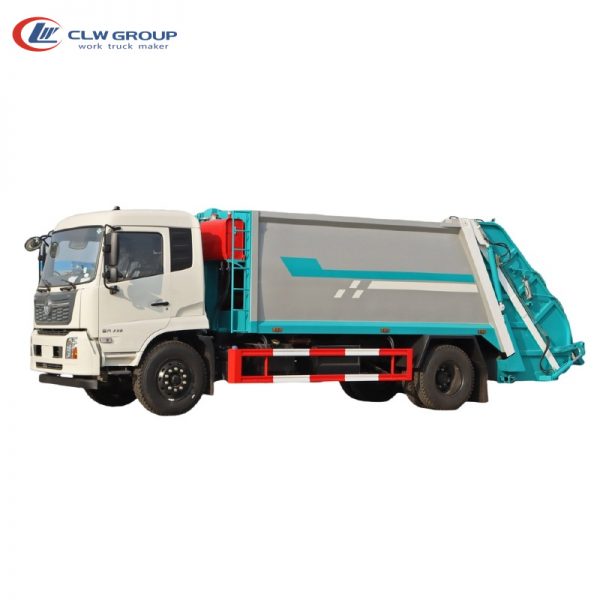Comprehensive Garbage Truck Inspection Checklist for Optimal Performance and Safety
Introduction Garbage trucks play a critical role in waste management systems, efficiently collecting and transporting waste materials to disposal sites. To ensure the smooth operation of these vehicles and to maintain safety standards, regular inspections are essential. A comprehensive garbage truck inspection checklist serves as a valuable tool for fleet managers, maintenance personnel, and drivers to identify and address potential issues promptly. In this article, we will delve into the key components of a thorough garbage truck inspection checklist, highlighting the importance of each step in ensuring optimal performance and safety. 1. Exterior Inspection The first step in the garbage truck inspection process is to conduct a thorough examination of the vehicle's exterior components. This includes checking the body of the truck for any signs of damage, such as dents, scratches, or rust. Inspect the doors, windows, and mirrors to ensure they are in good working condition and properly aligned. Check the lights, including headlights, taillights, brake lights, and turn signals, to confirm they are operational. Verify that the tires are properly inflated and have adequate tread depth to ensure safe driving conditions. 2. Engine and Mechanical Components Next, focus on the engine and mechanical components of the garbage truck. Start by checking the fluid levels, including oil, coolant, brake fluid, and hydraulic fluid. Inspect the belts and hoses for any signs of wear or damage and replace them if necessary. Test the battery to ensure it is holding a charge and check the electrical system for any issues. Examine the brakes, including the pads, rotors, and brake lines, to confirm they are functioning correctly. 3. Hydraulic System The hydraulic system is a critical component of a garbage truck, responsible for lifting and compacting waste materials. Inspect the hydraulic cylinders, hoses, and fittings for leaks or damage. Test the operation of the hydraulic system to ensure smooth and efficient functioning. Check the hydraulic fluid level and quality, and top up or replace it as needed. Proper maintenance of the hydraulic system is essential to prevent breakdowns and ensure the efficient operation of the garbage truck. 4. Compactor Mechanism The compactor mechanism of a garbage truck is designed to compact waste materials to maximize the truck's carrying capacity. Inspect the compactor blade and ram for any signs of wear or damage. Verify that the compactor is operating smoothly and efficiently. Check the safety features of the compactor mechanism, such as emergency stop buttons and safety guards, to ensure they are functioning correctly. Regular maintenance of the compactor mechanism is essential to prevent malfunctions and ensure the safe handling of waste materials. 5. Safety Equipment Safety should be a top priority when inspecting a garbage truck. Check the safety equipment, including fire extinguishers, first aid kits, warning triangles, and reflective vests, to ensure they are present and in good working condition. innovations in truck mounted crane technology belts to confirm they are functioning correctly and are not damaged. Test the horn, backup alarm, and other audible warning devices to ensure they are operational. Properly functioning safety equipment is essential to protect drivers, crew members, and the public from accidents and injuries. 6. Interior Inspection  The final step in the garbage truck inspection checklist is to conduct an interior inspection of the vehicle. Check the driver's cab for cleanliness and organization, ensuring that all controls and instruments are easily accessible. Inspect the dashboard for any warning lights or error messages and address any issues promptly. Test the air conditioning, heating, and ventilation systems to ensure driver comfort and safety. Verify that all doors and windows are functioning correctly and securely closed. Conclusion A comprehensive garbage truck inspection checklist is a valuable tool for ensuring the optimal performance and safety of waste management vehicles. By following a systematic inspection process that covers the exterior, engine, hydraulic system, compactor mechanism, safety equipment, and interior of the truck, fleet managers, maintenance personnel, and drivers can identify and address potential issues proactively. Regular inspections and maintenance are essential to prevent breakdowns, ensure safe operation, and extend the lifespan of garbage trucks. By prioritizing the maintenance of these essential vehicles, waste management companies can enhance efficiency, reduce costs, and promote a safer working environment for their employees and the public.
The final step in the garbage truck inspection checklist is to conduct an interior inspection of the vehicle. Check the driver's cab for cleanliness and organization, ensuring that all controls and instruments are easily accessible. Inspect the dashboard for any warning lights or error messages and address any issues promptly. Test the air conditioning, heating, and ventilation systems to ensure driver comfort and safety. Verify that all doors and windows are functioning correctly and securely closed. Conclusion A comprehensive garbage truck inspection checklist is a valuable tool for ensuring the optimal performance and safety of waste management vehicles. By following a systematic inspection process that covers the exterior, engine, hydraulic system, compactor mechanism, safety equipment, and interior of the truck, fleet managers, maintenance personnel, and drivers can identify and address potential issues proactively. Regular inspections and maintenance are essential to prevent breakdowns, ensure safe operation, and extend the lifespan of garbage trucks. By prioritizing the maintenance of these essential vehicles, waste management companies can enhance efficiency, reduce costs, and promote a safer working environment for their employees and the public.